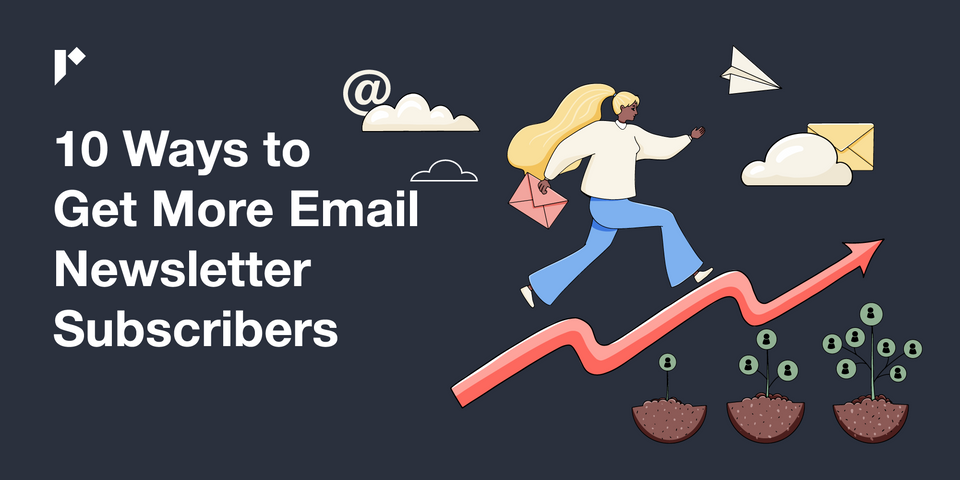When Pat Flynn started his Smart Passive Income blog back in 2008, he made one costly mistake — he didn't collect email addresses. As Pat himself says:
"Not having an email list was like shooting myself in the foot. It was a huge mistake because I sold products but had no way of letting people—interested people —know that they existed."
Nowadays, Pat has thousands of newsletter subscribers who eagerly look forward to getting their weekly dose of "Unstuck."
Like Unstuck, your free newsletter can offer stories, advice and entertainment in the email or link to a blog post, an article on Medium or LinkedIn or social media posts.
Newsletters represent a golden opportunity to connect and build relationships with your ideal audience and potential new customers. You can even monetize your newsletter by selling ads or attracting sponsors.
And, of course, you can alert your subscriber list to all your products and services.
But none of these opportunities will happen unless you understand how to attract more newsletter subscribers. So, let's check out ten proven ways to get more people to opt in to your email list.
Table of Contents
1. Provide value
The first rule of newsletter growth is to ensure you're putting out high-quality content that serves your target audience, i.e., the subscribers who are most likely to find your products and services valuable.
But what is value? Newsletter guru, Josh Spector, gives his definition in this 2021 tweet:
"Value is transformation. The way to create value for people is to help them transform. Create things that help people get from Point A to Point B. Your creation is the bridge. If your creation doesn’t drive a transformation, it’s probably not valuable."
Provide value with a digest email newsletter
Newsletters can provide value in many forms. A digest email is a round-up of your work and that of other people in your niche. It will usually share links to products, articles and social media posts that your subscribers will likely find helpful.
Example:
"The Dunker" by Sophie Cross and the Freelancer Magazine is a weekly newsletter with 15 links over three categories: '5 for your freelance brain', '5 for your business brain', and '5 for your creative brain'. And it invites potential subscribers to buy the magazine with a clear call to action before the final 'events for freelancers' section.
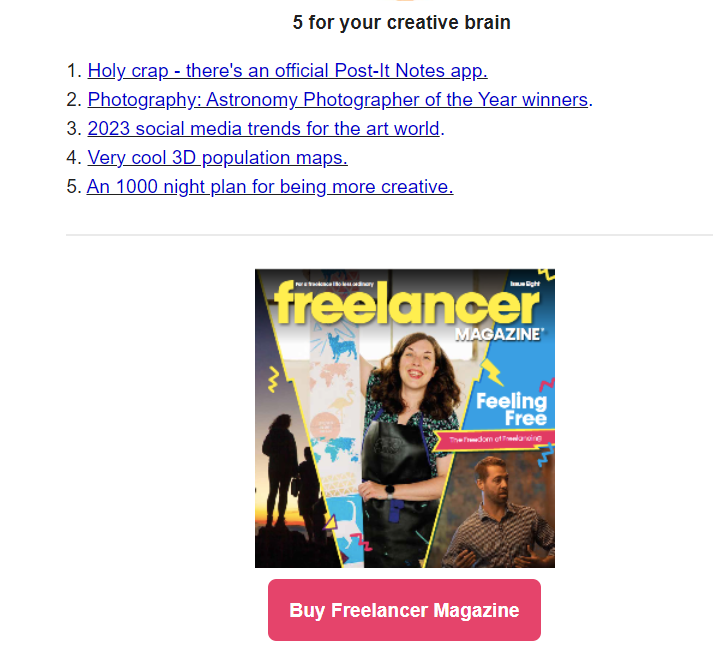
Include exclusive content and product links
Other newsletter publishers prefer to present a whole blog post or exclusive content within the email, along with unobtrusive product links at the end.
Example:
This edition of "La Vie Ben Rose," a newsletter from copywriter Benjamin Watkins, includes concise notes about excellent copywriting, along with illustrations and examples on each point.

Consider the value in your welcome email sequence
You can start adding value for new subscribers from the first welcome email. Traditional sign-ups involve a double opt-in form, followed by a thank you email series set on an autoresponder. If that doesn't appeal, consider trying a Parallel Welcome Sequence, an entirely new way to look at welcome emails. (P.S. I found that link via the "For The Interested" newsletter.)
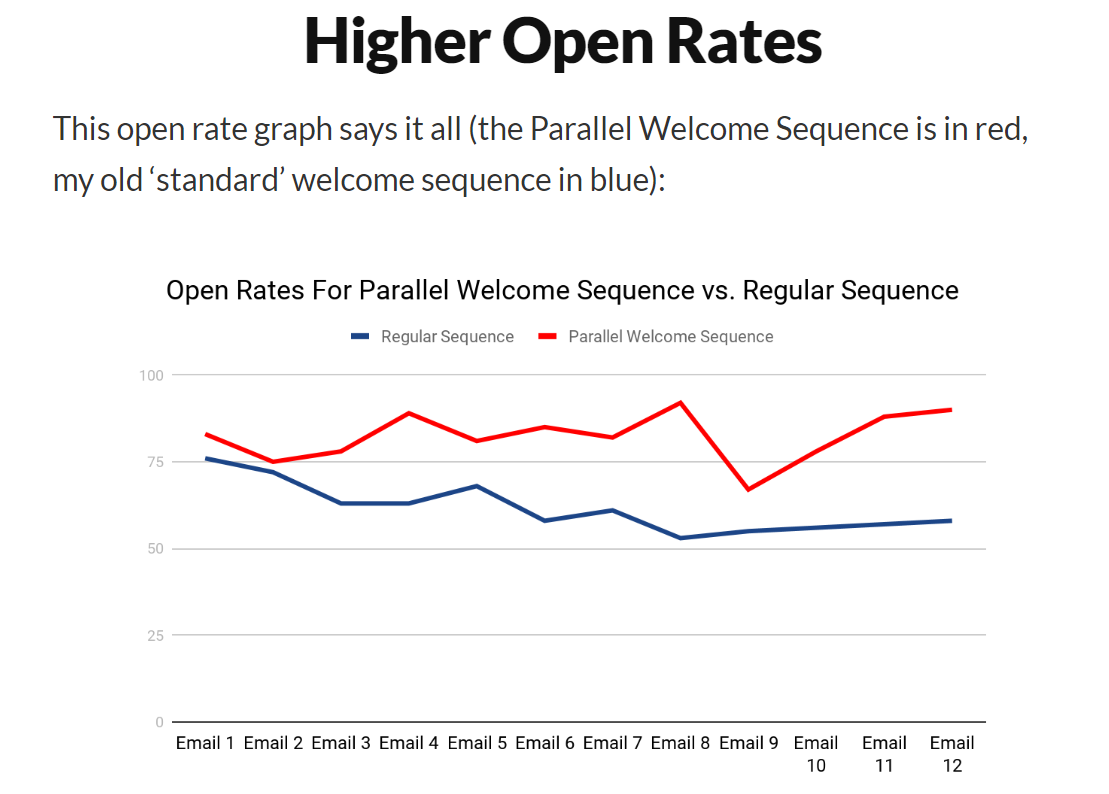
2. Cross-promote with other newsletters
Another way to find new subscribers is to build relationships with other newsletter creators. Joining forces with other creators lets you get in front of a new audience who are likely to like your "stuff," too. Cross-promotion can take many forms. You could:
- Promote each other's newsletters on many platforms, such as your Facebook page, Linked in, Twitter, Snapchat or the home page of your main site.
- Feature their work in your newsletter with a link to their landing page.
- Give each other a free shoutout in your classified ads sections.
- Do a "newsletter takeover" and write part of each other's newsletter.
- Invite contributors and link to their newsletter, encouraging your subscribers to check it out.
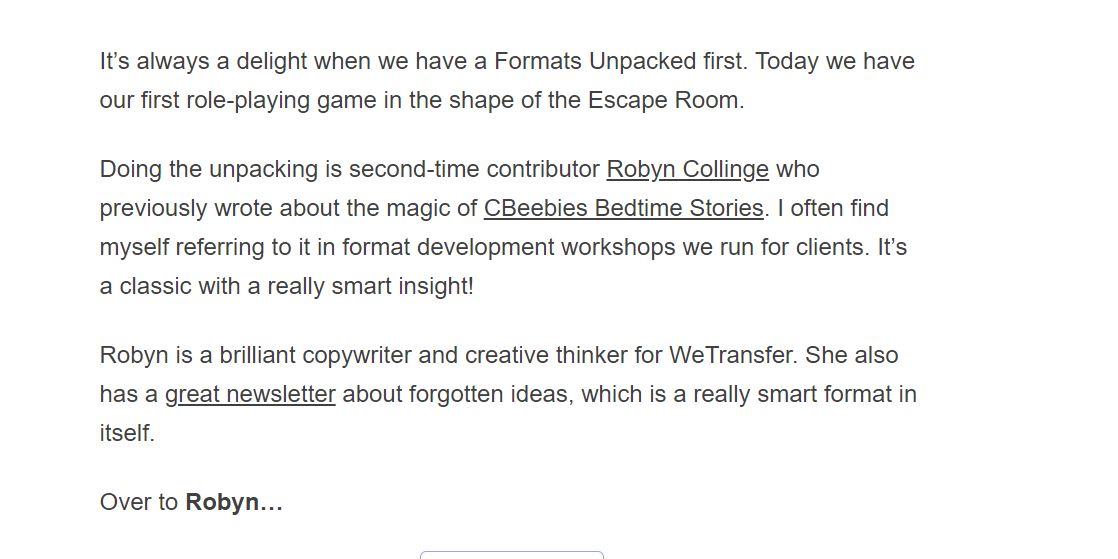
It can be tricky to find newsletter creators who are keen to try cross-promoting. You may not have many suitable contacts in your network unless you've been in the business for a long time.
That's why we built Reletter, a comprehensive newsletter database. Reletter covers more than just traditionally-published newsletters.
You'll also find information and stats for newsletters on LinkedIn and Substack. That helps you narrow your options to similar newsletters that share your audience demographic. Reletter even gives you the contact information you need to reach out.
3. Run contests
If you aim to collect hundreds of email sign-ups quickly, consider running giveaways, quizzes and contests that will particularly appeal to your target audience.
Promoting a contest with prizes encourages people to your site, newsletter, sign-up form or product. Make it easy to access and create QR codes that take new subscribers straight to the contest landing page (include a newsletter signup form and a compelling call to action.)
Some newsletter publishers offer their subscribers the chance to "go into the draw for a gift voucher" if they... e.g., join the mailing list, refer new subscribers, buy the product, download the free e-book etc. But you don't have to spend money on special vouchers. Prizes can also come from within your product suite. E.g., offer free merchandise, early access to a new product or free entry to your gated content.
Kickoff Labs, which specializes in running giveaway campaigns, has this helpful blog post detailing all the ins and outs of holding a contest.
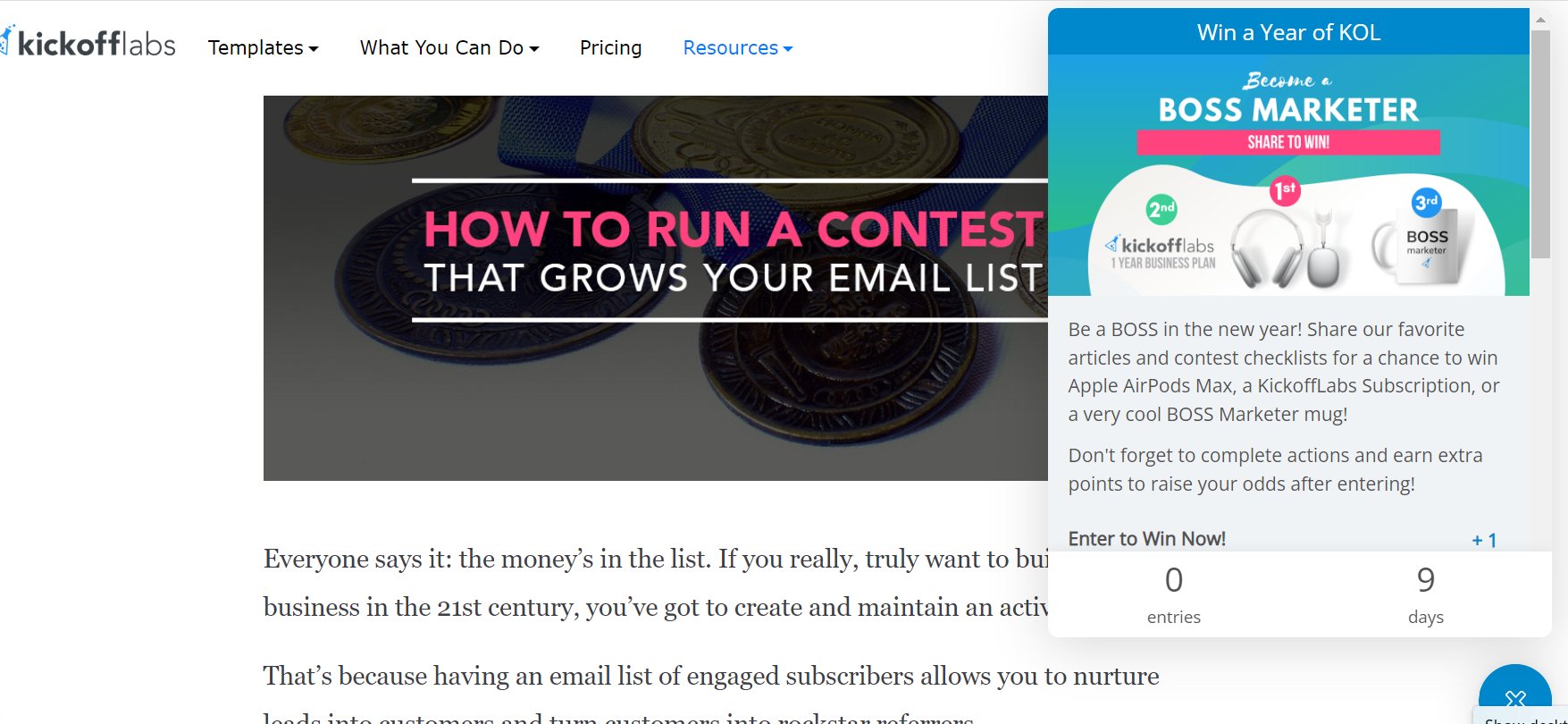
4. A/B testing
A/B testing lets you compare two versions of the same thing to see which appeals more to potential subscribers. Some marketers call it "split testing," while others say "bucket testing." Still, whatever you call it, A/B testing is an intelligent email marketing tactic because it helps you find the copy, images and layout most appealing to new subscribers.
Newsletter creators have many options for split testing.
For example, you could create two versions for:
- sign up pages
- landing pages
- layouts for your website
- a subject line
- giveaway prizes
- promotions on your Facebook page
Your email provider probably has a tool that enables A/B testing, showing one version or another to randomly selected subscribers, and collecting data about which version enticed more subscribers, clicks, opens or website visitors.
If you've heard about A/B testing but are unsure how to start, check out this beginner's guide by marketing blogger Neil Patel.
5. Repurpose on social media/blog posts
Spread the word about the value you offer your email subscribers by repurposing content as social media posts where a new subscriber might see it.
Many newsletter creators repurpose selected insights from each issue on their Facebook page, LinkedIn or Twitter. Or they work the other way around and post links from work in their social media accounts in their newsletter. If you write your newsletter as a blog post, you can also attract more subscribers by publishing it on sites like Medium.
Always include a link to your sign-up page and a CTA that shows the value you offer subscribers.
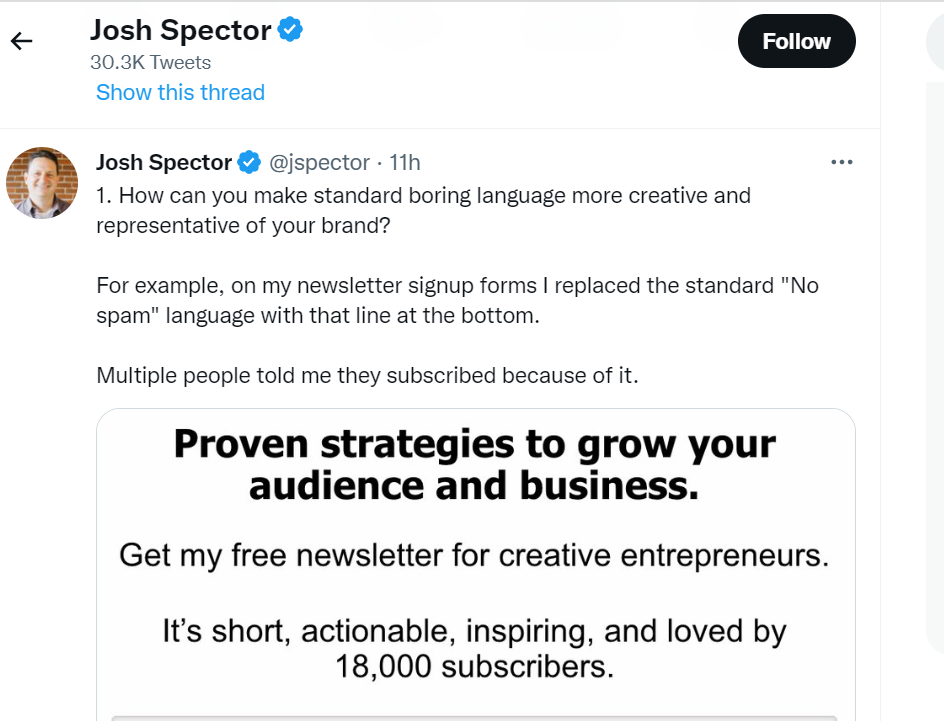
6. Reduce unsubscribes
Newsletters don't have to be all or nothing. You can give your email subscribers options about what they see, how much, or how often.
For example, you might let subscribers choose how often they receive your newsletter. And when you increase your email communication, e.g., during a product launch, give them the option to unsubscribe from those emails rather than ditching the whole newsletter.
A/B testing comes in handy here, too. Test different send times and subject lines to see which ones have better engagement rates.

7. Referral program
Another way to increase your email list is by running a referral program. People on your current mailing list earn rewards if they send your newsletter to their friends and colleagues who subscribe through that link.
It works because an engaged subscriber on your email list probably knows others in that niche who would be keen on getting your insights, tips, or information. Offering incentives may be the tipping point that motivates a subscriber to share links.
Your current subscribers can share their unique link on their phones, by email or through social media channels. How they share doesn't matter so long as their friends subscribe through their link and then reply to the confirmation email.
Morning Brew is one mega-newsletter that runs a successful referral program, but you don't need an enormous email list to start one.
Your email provider probably integrates third-party referral software that lets newsletters of all sizes offer new subscriber incentives. E.g., Convert Kit partners with SparkLoop, and Mailchimp works with Firewards.
Rewards often scale with the number of referrals a subscriber makes. So, you might start by offering free merch or behind-the-scenes content and work up to a free consultation or a significant discount on your course.
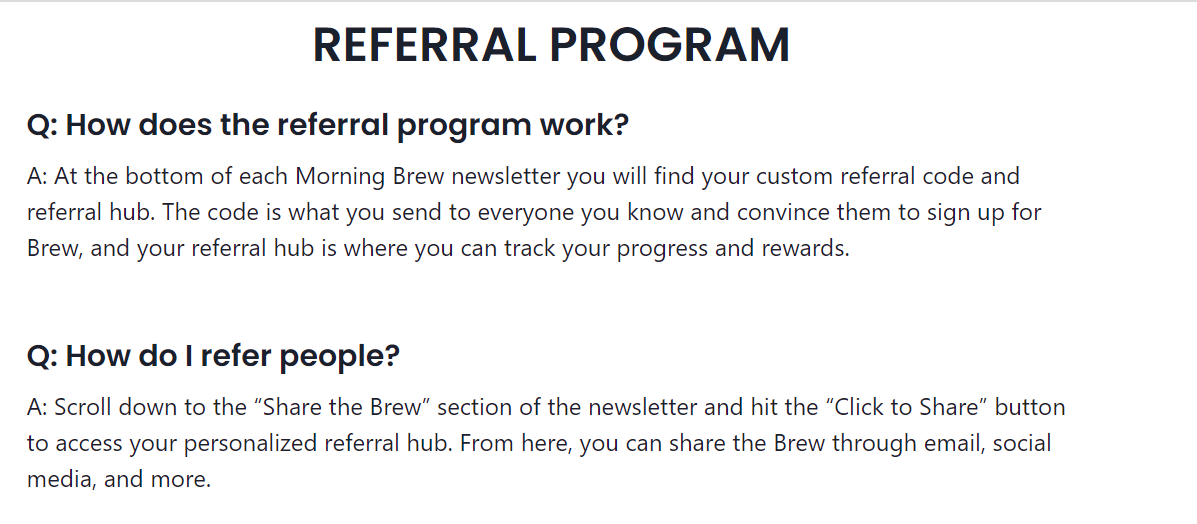
8. Testimonials and reviews offer social proof
Collecting and displaying reviews and testimonials from engaged subscribers is another proven way to grow your email list.
If you offer real value, which your readers use and reap the benefits from, they will be eager to share that success. That's especially so if they got your advice via your free newsletter because giving a positive review or testimonial is an easy way to return your favor.
You can gather testimonials and reviews through social media sites, word of mouth and emails from happy subscribers and display them on a landing page, on your website, in the newsletter, and on social media.
9. Get input from the community
There's nothing like reaching out to your community for their thoughts on creative ways to increase newsletter subscribers. Consulting your readers makes them even more interested and encourages them to share ideas.
There are many ways to get input from your newsletter community. You could:
- Survey them regularly
- Meet them at in-person events
- Consult interested subscribers on a one-to-one call
- Include a call to action asking for thoughts on that week's newsletter
- Ask a question and invite readers to reply
- Run a contest (see above) in conjunction with a survey or phone/video calls
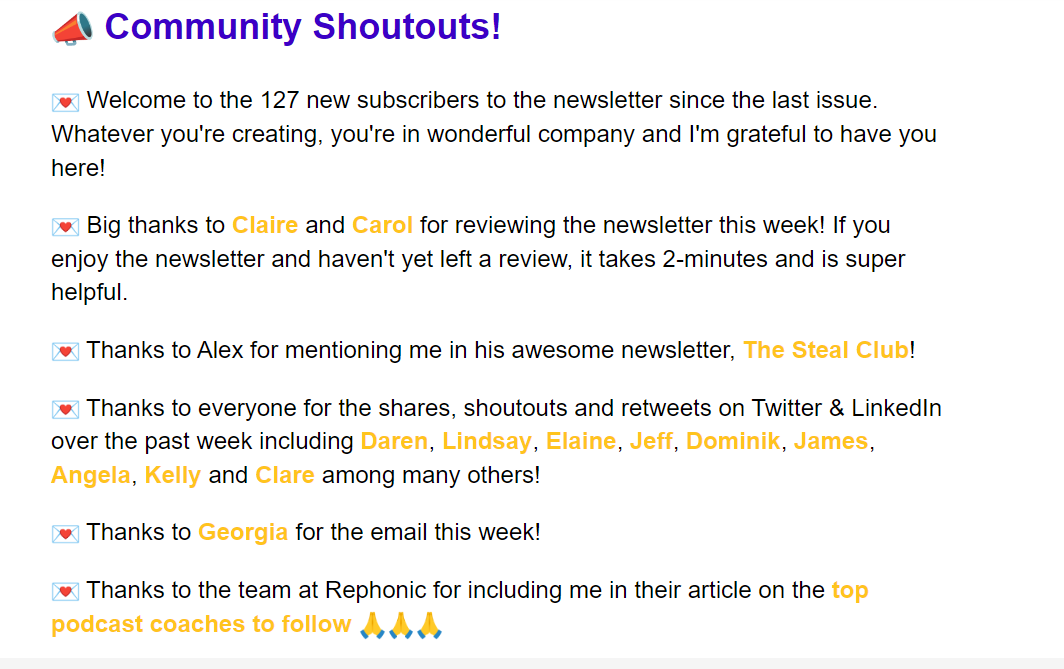
10. Advertise in other newsletters
Advertising is another excellent way to increase newsletter subscribers.
Use Reletter to find newsletters in your niche, then approach them to book sponsorship or advertising space.
Reletter lets you see all the info you need to decide whether their target audience matches yours. You'll find the writer's website and contact details to inquire about their sponsorship rates and see testimonials from previous sponsors.
Check out our blog posts on how to run newsletter sponsorships that generate leads and newsletter advertising rates for more information on newsletter advertising.
Final thoughts
When you read an article like this on how to get more newsletter subscribers, it can be tempting to try doing everything at once.
However, it's better to use a more considered approach. So, choose one (or two at the most) option and make a SMART plan (Specific, Measurable, Achievable, Relevant, and Time-Bound) to see if it increases email sign-ups or if there's no noticeable change to your mailing list.
Then repeat the process with another option that fits your newsletter and your audience. If your newsletter is truly valuable to people in your niche, using these techniques to let others know about it will pay dividends over time.

